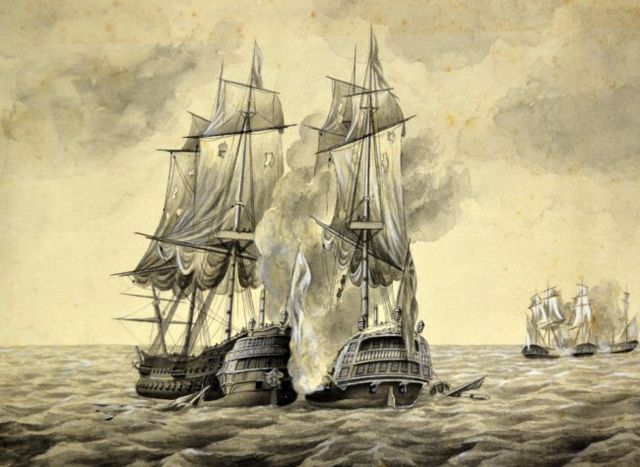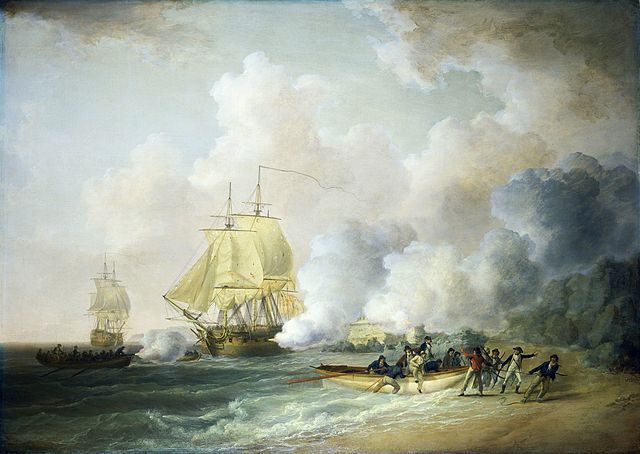HMS Bellona was a 74-gun Bellona-class third-rate ship of the line of the Royal Navy. Designed by Sir Thomas Slade, she was a prototype for the iconic 74-gun ships of the latter part of the 18th century. "The design of the Bellona class was never repeated precisely, but Slade experimented slightly with the lines, and the Arrogant, Ramillies, Egmont, and Elizabeth classes were almost identical in size, layout, and structure, and had only slight variations in the shape of the underwater hull. The Culloden-class ship of the line was also similar, but slightly larger. Thus over forty ships were near-sisters of the Bellona." Bellona was built at Chatham, starting on 10 May 1758, launched on 19 February 1760, and commissioned three days later. She was the second ship of the Royal Navy to bear the name, and saw service in the Seven Years' War, American Revolutionary War and the Napoleonic Wars.
Bellona
The action of 14 August 1761 off Cape Finisterre at which HMS Bellona captured the French ship Courageux
Bellona at Copenhagen, 1801
Robert Faulknor the younger
Robert Faulknor the younger (1763–1795) was an 18th-century Royal Navy officer, part of the Faulknor naval dynasty. He was court-martialled and died in an action off Guadeloupe in the eastern Caribbean Sea.
Printed memorial to Robert Faulknor, by H. D. Gardner, published 1795 (after James Roberts)
Capture of Fort Saint Louis, Martinique, 1794, with Asia in the background and HMS Zebra in the foreground - Artist: William Anderson (British/Scottish artist)
The capture of the Pique by HMS Blanche
The death in action of Captain Robert Faulknor on January 5, 1795 during the engagement between the Frigate Blanche and the Frigate Pique - Guadeloupe







